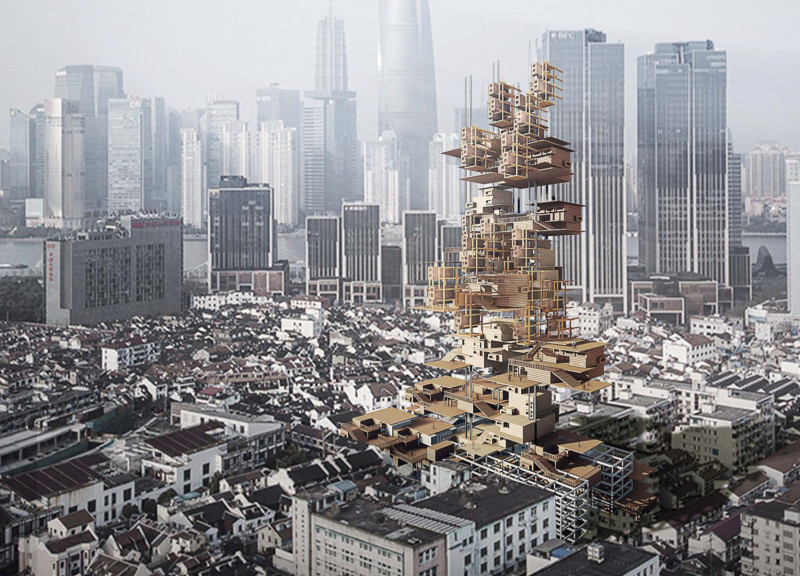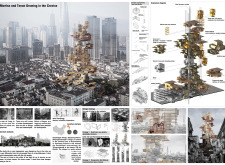5 key facts about this project
The design "Mortise and Tenon Growing in the Crevice" is set in Caochangdi Village, an area in Beijing known for its artistic community. This project serves to meet the needs of artists by integrating spaces for living and working. The design approach is based on the traditional mortise and tenon joint, which symbolizes flexibility and connection among its users.
Design Concept
The focus is on creating an environment where artists can move easily between their living quarters and workspaces. The layout includes both horizontal and vertical connections, which encourage interaction and collaboration. This organization is vital for fostering a sense of community among the residents and enhances their creative processes.
Spatial Configuration
Distinct tenant units are incorporated throughout the design, varying in size and purpose to accommodate the different needs of the artists. Each unit features private living areas as well as shared amenities like exhibition spaces and community platforms. This design allows artists to engage with one another while still providing the privacy they need.
Material Considerations
The structure is built with steel, which provides necessary support while allowing for flexible configurations. Mortise and tenon joints enhance the overall strength of the building. This choice of materials connects modern construction techniques with traditional craftsmanship, reflecting an understanding of both durability and artistic expression.
Psychological Engagement
Attention is given to the psychological well-being of artists who often face challenges in urban living conditions. Affordable and adaptable spaces are central to the design. By ensuring quality living environments, the project aims to improve the daily lives of its residents, allowing them to focus on their creative work.
The design also enhances the play of light throughout the spaces. This interaction between light and shadow creates visually interesting environments that stimulate creativity and reflection.



















































